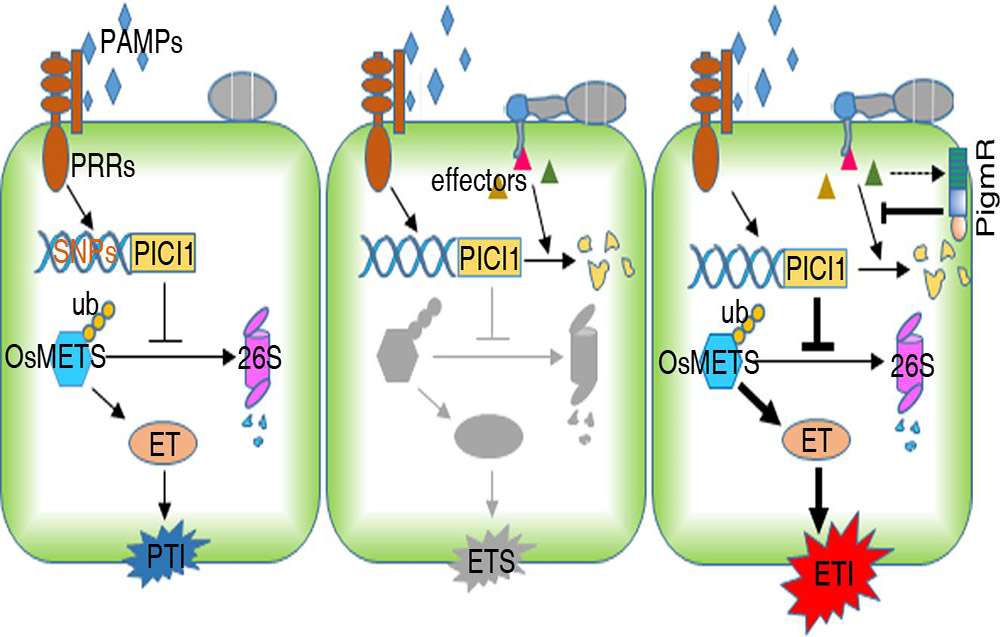Rice production is critical to food security worldwide. However, the rice blast fungus Magnaporthe oryzae (M. oryzae) causes destructive disease and huge yield loss worldwide. Exploiting and breeding rice with broad-spectrum resistance to rice blast is therefore of great value for ensuring global food production.
On December 16th, 2021, a group from CAS Center for Excellence in Molecular Plant Sciences (CEMPS) published a novel immune-metabolic regulatory network in the leading world journal Nature. The research team, led by professor He Zuhua, has made a great breakthrough regarding the genetic and molecular mechanism that confers rice broad-spectrum resistance against the blast fungus.
In 2017, the same group identified the broad-spectrum blast resistance gene Pigm (Science, 2017). In the current study, they have discovered for the first time that the immune protein PigmR governs an arms race with the fungal virulent effector proteins with a competitive mode that hinges on a critical metabolic pathway of defense molecule production, which synchronize basal defense (PTI) and race-specific defense (ETI).
The researchers first identified a novel plant deubiquitinase, PICI1, as an immune hub for PTI and ETI in rice. PICI1 deubiquitinates and stabilizes methionine synthetases to activate methionine-mediated immunity principally via biosynthesis of the defense phytohormone, ethylene. However, PICI1 is targeted for degradation by blast fungal virulent effectors, to dampen immunity. In turn, NLR immune receptors, such as PigmR, protect PICI1 from effector-mediated degradation to reboot the methionine-ethylene cascade that operates plant immunity. Therefore, the researchers have uncovered a previously unknown plant host immune proteins-mediated arms race with pathogens, which safeguards primary metabolite biosynthesis and immune operation in plants.
They further found that the natural variation of PICI1 contributes to divergence in field blast resistance between rice subspecies indica and japonica, providing a potential breeding target for broad-spectrum blast resistance in crops.
A proposed model for NLRs-PICI1-OsMETS-ET cascade in rice blast resistance
Article link:
https://www.nature.com/articles/s41586-021-04219-2
Contact:
Prof. Zuhua He, Group leader
National Key Laboratory of Plant Molecular Genetics, Center for Excellence in Molecular Plant Sciences (CEMPS), Chinese Academic of Sciences
Tel: 86-21-54924121
Email: zhhe@cemps.ac.cn
